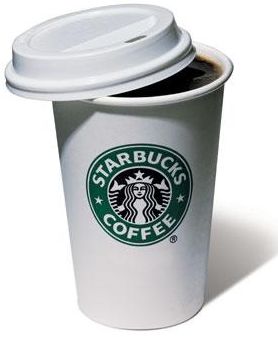Introduction | What is Caffeine: Molecule Structure | Stimulating Science: The Properties of Caffeine | Discovery: The Magical Bean | Coffee Creates a Social Lifestyle in Europe |Colonization and Coffee|Coffee’s Impact on the Nation of Brazil|Coffee Industry Today| Conclusions
The beneficial effects of caffeine have created a world-wide demand for coffee throughout history. It has been integrated and transfixed in into modern society. The caffeine molecule has made coffee is the second most valuable commodity, after oil, in the world market. The coffee industry itself is a billion dollar industry, with revenue deriving from the growing of coffee, to packaging it and selling it, to coffee shops around the world.
One major example of a coffee shop which has taken full advantage of the current global demand for coffee is the American based Starbucks Corporation. The organization was founded in 1971 as a small coffee shop in Seattle, Washington and has grown to become an international corporation with over 15,000 locations in 44 different countries. Starbucks Corporation is extremely successful, with revenues have reached beyond $10 billion dollars (Yahoo Finance, 2008).
Companies like Starbucks echo the old coffeehouses of the 1600’s in Europe – for they are establishments where people can interact socially over a cup of coffee.
The global dominance of the coffee market has had other social implications as well. In recent years consumer consciousness and the relationship between the coffee growers and the coffee consumers have been in the spotlight. The poor treatment of workers on coffee plantations and the negative ecological repercussions of coffee cultivation have created a call for socially responsible and humane practices among coffee growing organizations. The demand for fairly traded coffee from the conscious consumer has increased greatly over the past decades. In All About Coffee, the fair trade movement is described as a “movement that focuses on paying producers fairly for the goods they produce, encouraging production techniques that promote environmental and social sustainability, and fostering long term, personal relationships among producers, traders and consumers”(Dicum & Luttinger, 1999, p 171). Companies within the industry have taken note, as well as taken action in this movement. For example, Starbucks is a supporter of fair trade and has a corporate social responsibility mission and vision statement which it follows.


